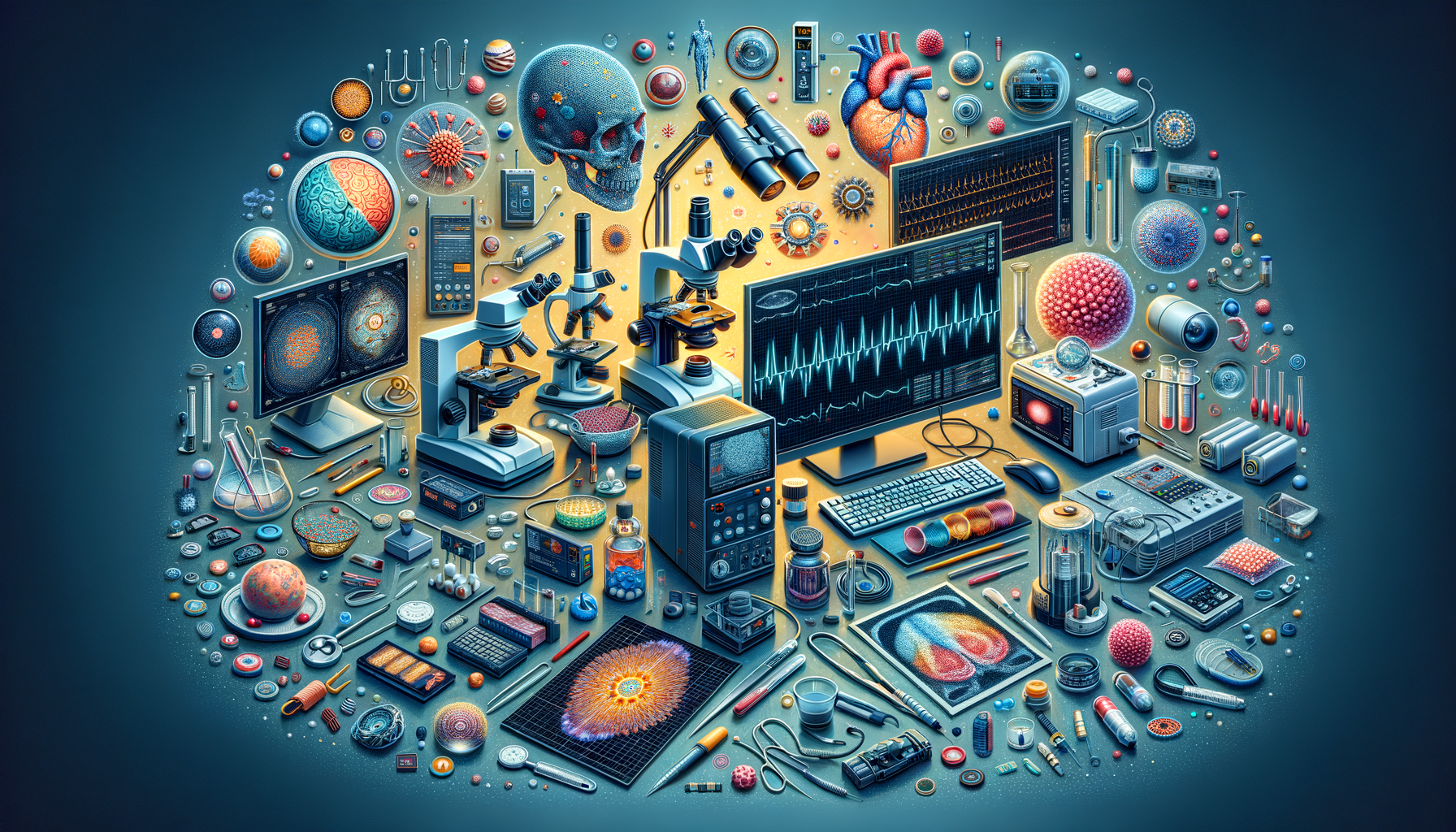
Explore the Frontiers of Medical Science : Biomedical course
Introduction to Biomedical Instrumentation and Diagnostic Techniques
Biomedical instrumentation and diagnostic techniques are pivotal in the advancement of medical science. These tools and methods allow healthcare professionals to diagnose and monitor various health conditions accurately. The importance of this field lies in its ability to bridge the gap between engineering and medicine, providing innovative solutions to complex medical problems. With the continuous evolution of technology, biomedical instrumentation has become more sophisticated, offering precise diagnostic capabilities that were previously unimaginable.
Biomedical instrumentation encompasses a wide range of devices and techniques, from simple thermometers to complex MRI machines. These instruments are designed to measure and record physiological data, which can then be analyzed to provide insights into a patient’s health status. The integration of technology in healthcare has not only improved diagnostic accuracy but also enhanced patient care by enabling early detection and intervention.
Diagnostic techniques, on the other hand, involve the methods and procedures used to identify diseases and conditions. These techniques range from traditional methods like blood tests and X-rays to advanced imaging techniques such as CT scans and PET scans. The role of diagnostic techniques is crucial in the management of diseases, as they provide the necessary information for developing effective treatment plans.
The Role of Biomedical Signal Processing in Modern Healthcare
Biomedical signal processing is a key component of modern healthcare, playing a critical role in the analysis and interpretation of physiological signals. This field involves the use of advanced algorithms and computational techniques to process signals obtained from biomedical instruments. The primary goal of biomedical signal processing is to extract meaningful information from raw data, which can then be used for diagnosis, monitoring, and treatment.
One of the most common applications of biomedical signal processing is in the analysis of electrocardiograms (ECGs). By processing the electrical signals generated by the heart, healthcare professionals can detect abnormalities such as arrhythmias and other cardiac conditions. Similarly, signal processing techniques are used in the analysis of electroencephalograms (EEGs) to diagnose neurological disorders like epilepsy.
The significance of biomedical signal processing extends beyond diagnosis. It also plays a vital role in the development of wearable health devices, which continuously monitor physiological signals and provide real-time feedback to users. These devices have revolutionized personal healthcare by empowering individuals to take control of their health and make informed decisions.
Imaging Techniques in Biomedical Science: A Closer Look
Imaging techniques in biomedical science have transformed the way we visualize and understand the human body. These techniques provide detailed images of internal structures, allowing for accurate diagnosis and treatment planning. The most widely used imaging modalities include X-ray, ultrasound, magnetic resonance imaging (MRI), and computed tomography (CT).
X-ray imaging is one of the oldest and most common techniques, used primarily for examining bones and detecting fractures. Ultrasound, on the other hand, uses sound waves to create images of soft tissues, making it invaluable in obstetrics and cardiology. MRI provides high-resolution images of soft tissues, making it ideal for brain and spinal cord imaging. CT scans offer detailed cross-sectional images of the body, which are useful in detecting tumors and other abnormalities.
Each imaging technique has its own advantages and limitations, and the choice of modality depends on the specific clinical scenario. The integration of imaging techniques with other diagnostic tools enhances the accuracy of diagnoses and improves patient outcomes. As technology continues to advance, imaging techniques are becoming more sophisticated, offering new possibilities for non-invasive diagnosis and treatment.
Innovations in Biomedical Instrumentation: Shaping the Future of Medicine
The field of biomedical instrumentation is constantly evolving, driven by technological advancements and the increasing demand for precision medicine. Innovations in this area are shaping the future of healthcare by providing new tools and techniques for diagnosis, monitoring, and treatment.
One of the most significant innovations in biomedical instrumentation is the development of portable diagnostic devices. These devices allow for point-of-care testing, enabling healthcare professionals to perform diagnostic tests at the patient’s bedside or in remote locations. This not only improves access to healthcare but also reduces the time and cost associated with traditional laboratory testing.
Another area of innovation is the integration of artificial intelligence (AI) in biomedical instrumentation. AI algorithms are being used to analyze complex data sets and provide diagnostic insights that are beyond human capabilities. This has the potential to improve diagnostic accuracy and reduce the likelihood of errors.
Wearable health devices are also at the forefront of innovation in biomedical instrumentation. These devices continuously monitor vital signs and provide real-time feedback to users, promoting proactive health management. The data collected by these devices can be used to detect early signs of disease and prevent complications.
Conclusion: The Impact of Biomedical Advances on Healthcare
The advancements in biomedical instrumentation and diagnostic techniques have had a profound impact on healthcare. These innovations have improved the accuracy and efficiency of diagnoses, leading to better patient outcomes. The integration of technology in healthcare has also empowered individuals to take control of their health, promoting a proactive approach to disease prevention and management.
The future of biomedical science holds great promise, with ongoing research and development aimed at addressing the challenges faced by the healthcare industry. As technology continues to evolve, we can expect to see further advancements in biomedical instrumentation and diagnostic techniques, paving the way for more personalized and effective healthcare solutions.
The journey of exploring the frontiers of medical science is an exciting one, filled with opportunities to improve patient care and enhance the quality of life. By embracing these advancements, healthcare professionals can continue to make significant contributions to the field of medicine and improve the well-being of individuals worldwide.


